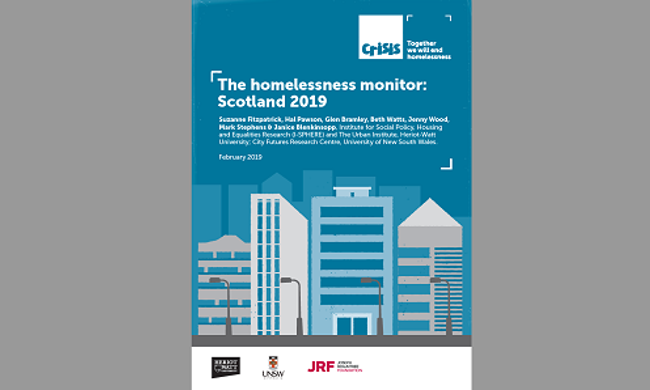The Homelessness Monitor: Scotland 2012
06.04.2012
The Homelessness Monitor: Scotland 2012 is the first annual report of an independent study, funded by Crisis and the Joseph Rowntree Foundation, of the homelessness impacts of recent economic and policy developments in Scotland.
Key findings
- There has been a significant divergence in homelessness law and policy across the UK in the post-devolution period, with Scotland opting to strengthen its statutory safety net far beyond anything contemplated elsewhere in the UK. From end 2012, all unintentionally homeless people in Scotland will be entitled to settled housing.
- There appears to be cross-sectoral support in Scotland for both this longstanding 2012 commitment, and for a more recent shift towards a ‘housing options’ preventative model, which has prompted a significant reduction in recorded homelessness applications.
- Thus, in sharp contrast to the rising trend in England, statutory homelessness applications have dropped by 19% in Scotland over the past year, from 55,663 in 2010/11 to 45,322 in 2011/12. This decline in statutory homelessness is associated with targeted homelessness policy and administrative measures – including changes in recording practices in some areas – rather than reflecting any easing in the underlying drivers of acute housing need. Indeed, evidence from the Scottish Household Survey indicates that the percentage of Scottish adults with experience of homelessness may have risen over the past decade.
- Rough sleeping appears to have declined in recent years in Scotland, with the total incidence recorded by local authorities falling in both absolute terms (by 43% over the past four years) and in proportionate terms (the percentage of applicants reporting that they slept rough the night prior to application dropped from 5.9% in 2007/08 to 4.3% in 2011/12). Repeat statutory homelessness also appears to be in decline: the percentage of statutory homelessness assessments identified as repeat cases has fallen from 9.8% in 2002/03 to 5.8% in 2011/12. These positive trends seem likely to be associated with the expansion in statutory rehousing entitlements for single people.
- Forms of ‘hidden’ homelessness – including concealed, overcrowded and sharing households – demonstrate a more mixed trend. Numbers of concealed households are relatively stable in Scotland, with estimates of 200,000 concealed single person households in 2012, as well as 12,000 concealed couples and lone parents. After a longterm decline, there has been an increase in the number of sharing households in Scotland in the last two years. The decline, and subsequent rise, of this indicator has been more marked in Scotland than elsewhere in the UK. In 2012 around 50,000 households in Scotland shared, mainly in the private rented sector. Overcrowding has continued to affect around 50,000 households in Scotland over the last decade, with no general trend to improvement, but nor has there been the deterioration evident in England.
Reference
Fitzpatrick, S., Pawson, H., Bramely, G. & Wilcox, S. (2012) The Homelessness Monitor: Scotland 2012. London: Crisis.




